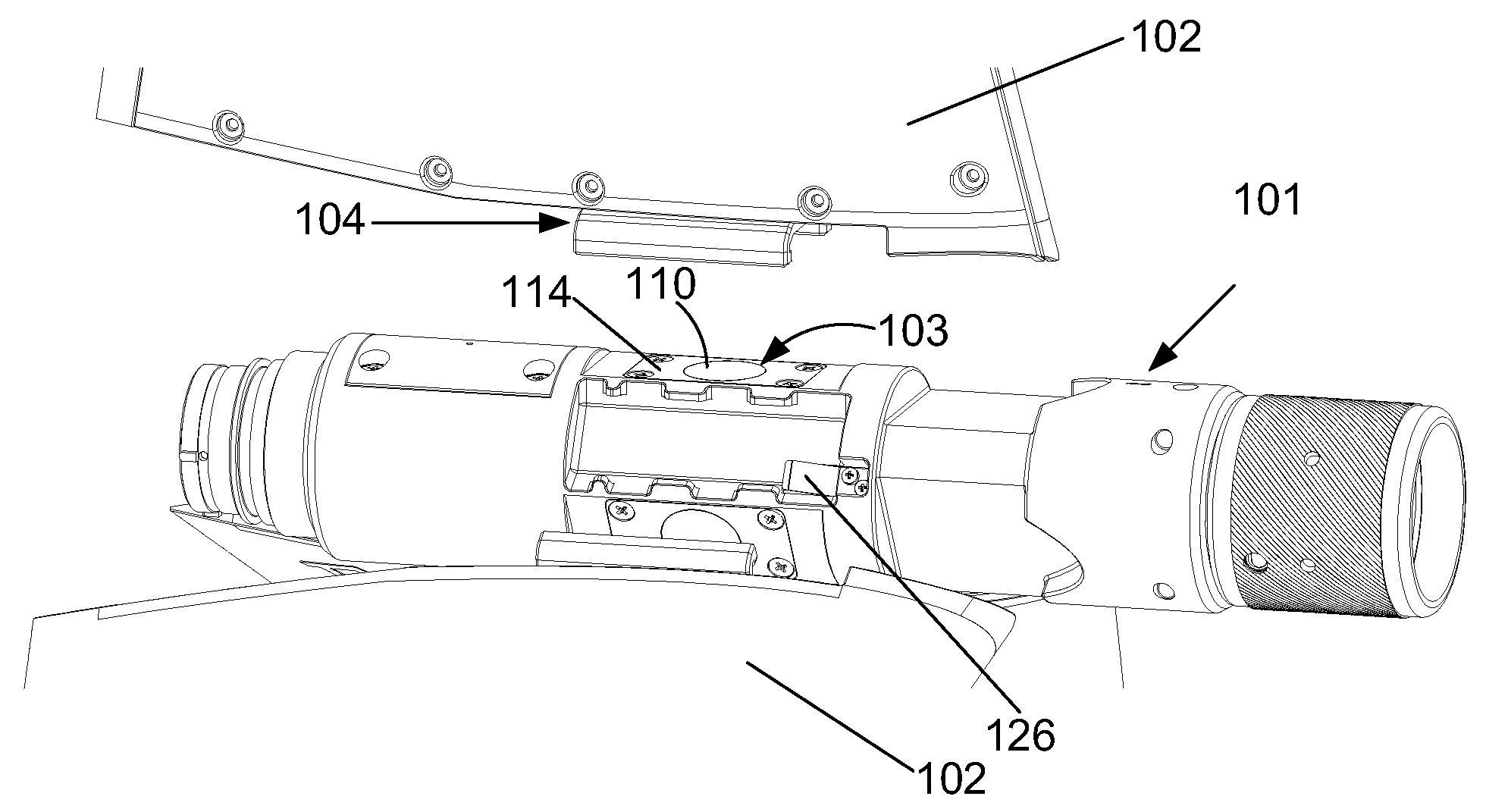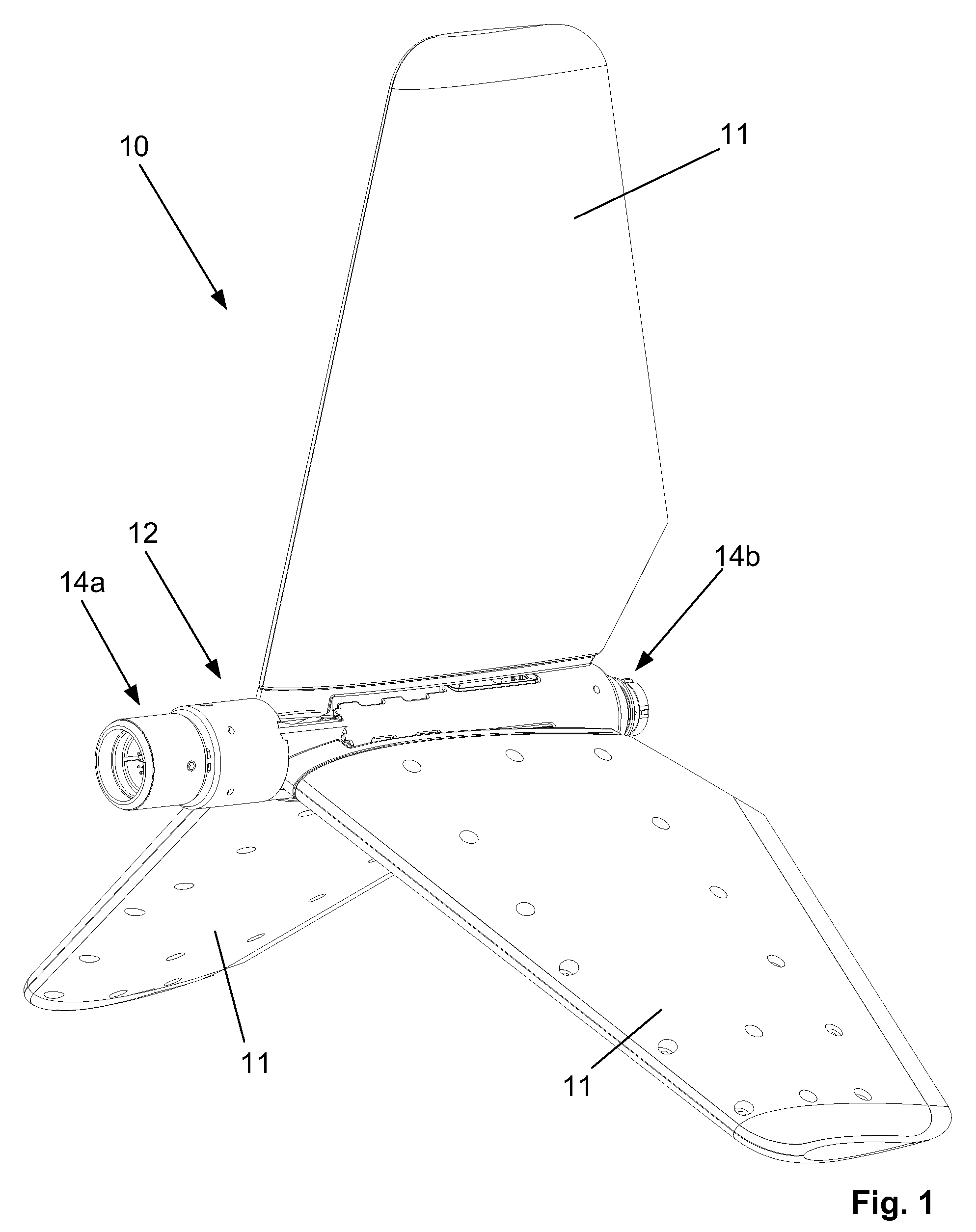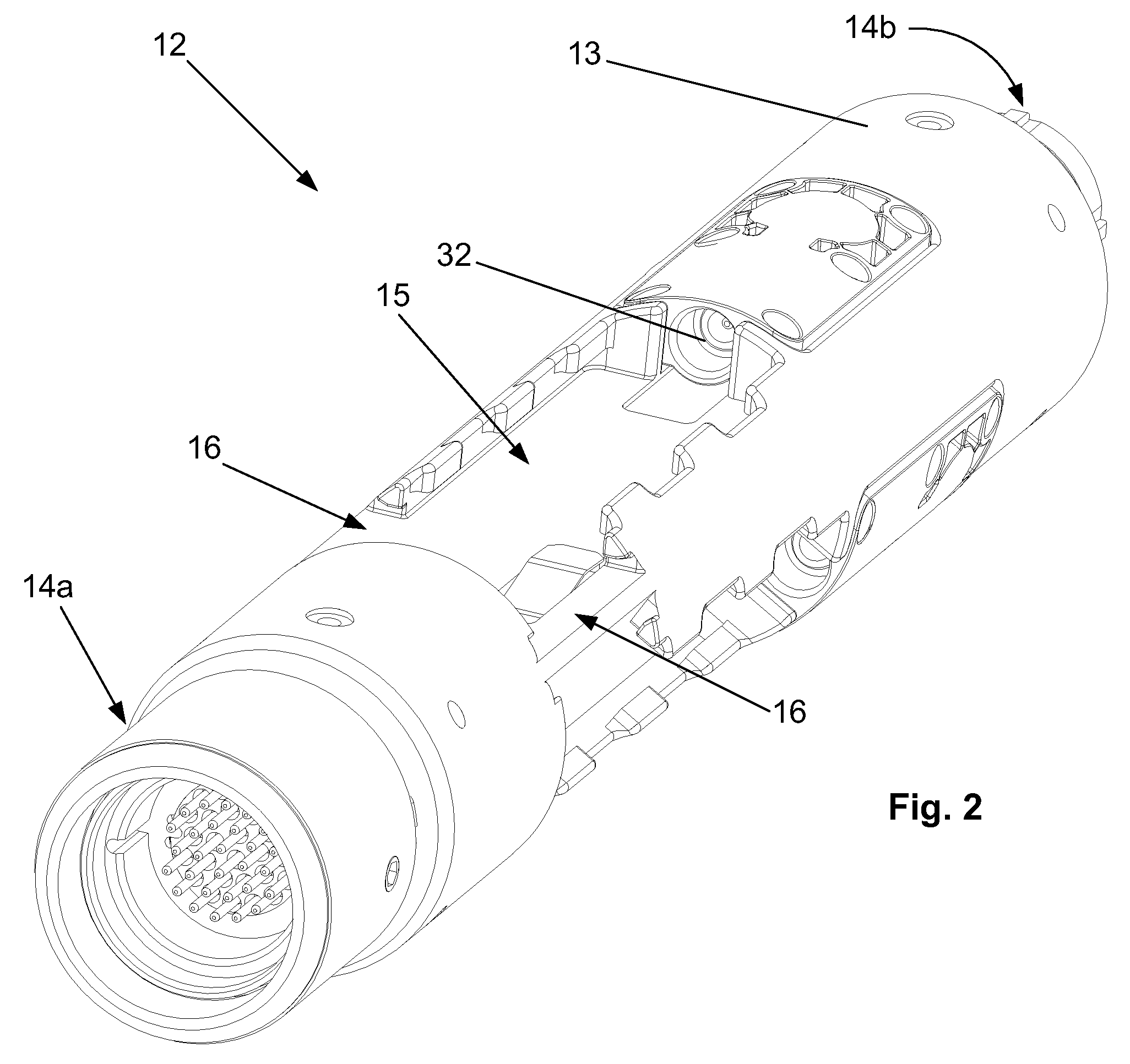Device for controlling the position of an instrument cable towed in water
a technology of instrument cables and devices, which is applied in underwater equipment, special-purpose vessels, vessel construction, etc., can solve the problems of streamer entanglement risk, non-uniform distribution of forces acting perpendicular to the streamer, and the worst-case situation, so as to reduce the risk of streamer entanglement and improve the safety of passengers and crew, the effect of shortening the time for finishing and deploying the streamer
- Summary
- Abstract
- Description
- Claims
- Application Information
AI Technical Summary
Benefits of technology
Problems solved by technology
Method used
Image
Examples
first embodiment
[0058]FIG. 1 shows a control device 10 according to the invention for connection in series between two adjacent streamer sections of a multi-section streamer. A control device 10 according to a preferred embodiment of the invention includes three similar wings 11, so-called smart wings, which are evenly distributed around a main body 12, which is shown in detail in FIG. 2, and is a so-called three-axis bird. In the example shown as three smart wings 11, it will be 120 degrees between the wings 11.
[0059]Referring now to FIG. 2 which shows details of the main body 12. The main body 12 is mainly an elongate streamlined tubular housing 13, which at its end includes connection means 14a and 14b adapted for mechanical and electrical connection in series in a multi-section seismic streamer, of the kind being towed behind seismic survey vessel. The connection means 14a-b are for this adapted with similar connection points (not shown) in each end of each streamer section, which connection po...
second embodiment
[0073]Referring now to FIG. 5 which shows a control device 50 according to the invention.
[0074]A second embodiment of the invention is based on detachable motor and drive gear housings provided with wings 52. Also this embodiment is connected in series between two adjacent streamer sections of a multi-section streamer. A control device 50 according to a second embodiment of the invention includes preferably three equal motor and drive gear housings 51 provided with wings 52, evenly distributed around a main body 53, as shown in detail in FIG. 5, and is a so-called three-axis bird. In the shown example with three wings 52, it will be 120 degrees between the wings 52.
[0075]Referring now to FIG. 6 which shows details of the main body 53. The main body 53 is preferably elongate and tubular, and is at its ends provided with connection means 54a and 54b, adapted for mechanical and electrical connection in series in a multi-section streamer, of the kind being towed behind a seismic survey ...
third embodiment
[0096]Referring now to FIG. 9 which shows an example of a third embodiment, in the form of a cross-section through a control device 100 according to the invention, adapted for wireless / contactless transfer of communication, i.e. signals / data, and / or energy between main body 101 and wings 102, preferably both communication and energy.
[0097]Referring now to FIGS. 10a-b which show details of the arrangement of a wing 102 to the main body 101. According to the third embodiment the main body 101 includes, as previous, specially designed fastening means 103 for fastening of the wings 102 mechanically to the main body 101. The wings 102 are, as previous, provided with a fastening part 104 which is adapted for mechanical fastening to the main body 101 via its fastening means 103. In contrast to the previous embodiments, the main body 101 and wings 102 do not need to include means for the connection of electricity or control signals, as this embodiment is adapted for wireless / contactless tra...
PUM
 Login to View More
Login to View More Abstract
Description
Claims
Application Information
 Login to View More
Login to View More - R&D
- Intellectual Property
- Life Sciences
- Materials
- Tech Scout
- Unparalleled Data Quality
- Higher Quality Content
- 60% Fewer Hallucinations
Browse by: Latest US Patents, China's latest patents, Technical Efficacy Thesaurus, Application Domain, Technology Topic, Popular Technical Reports.
© 2025 PatSnap. All rights reserved.Legal|Privacy policy|Modern Slavery Act Transparency Statement|Sitemap|About US| Contact US: help@patsnap.com



